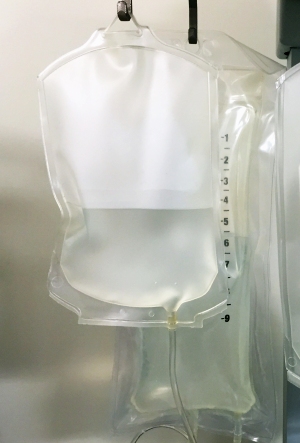More Evidence for Lidocaine?
Lidocaine for migraine is a treatment that won’t go away, and a recent study is motivating future use and study of this common anesthetic.

Lidocaine has been used for many years in migraine treatment. Emergency rooms have given it by IV. It’s been given through a tube up the nose directly to the nerves. It’s been used for SUNCT and SUNA (types of chronic headache).
Opinions about the pain-killing effects of lidocaine have been generally positive, though not always overwhelming compared to other options. But one thing that has intrigued researchers is that some patients seem to find that their headache attacks diminish in the weeks after the treatment (see for example Can this Procedure Teach Your Body to avoid Migraine?).
This recent study is positive on both counts. Records were pulled from 832 migraine patients who had received continuous multiday lidocaine infusions. The collection was narrowed down to 609 patients, 81.1% female and 18.9% male. Patients generally did experience pain relief – going from 7/10 on the pain scale to 1/10 by the time they left the hospital. 87.8% responded well to treatment.
A couple of things to note here. First, the lidocaine IV was only one of several treatments that these patients received. So this is not proof that the lidocaine, at least by itself, was decreasing the pain. But from what doctors have seen in the past, it seems to be one useful tool.
Second, remember that these were patients with serious migraine. Hospitalized over several days, these were not mild attacks, and were often part of a chronic pattern.
So with that in mind, let’s see what happened after they left the hospital. Follow-up happened between 25 and 65 days later.
At follow-up, 43% were practically pain-free still. Headache days decreased by about 16% on average.
These may not seem like incredible results, but for patients with such serious migraine, it’s a hopeful sign that lidocaine may be a way to help break the cycle for some.
The researchers write:
Continuous lidocaine infusions were associated with improvement in acute pain in most patients and a decrease in both average pain and the number of headache days per month that extended out to 1 month. … Lidocaine may be a viable treatment option for patients with refractory chronic migraine who have failed other treatments. A prospective, randomized, double-blind trial is needed to confirm these results.
Lidocaine infusions help relieve pain in unresponsive chronic migraine
Lidocaine, although a treatment that’s been around a long time, is still one to watch. As we learn how to use it better, it may turn out to be a major way to stop migraine attacks that just won’t stop otherwise.
See the study abstract here: Lidocaine infusions for refractory chronic migraine: a retrospective analysis

28 October 2023 @ 4:53 am
We otolaryngologists often try inserting a cotton tipped probe dipped in 2% or 4% Lidocaine to diagnose septal impaction headache (a contact point between the septum and lateral nasal wall causing headache). For non-otolaryngologists it may be one of the primary headaches ?
28 October 2023 @ 4:54 am
We otolaryngologists often try inserting a cotton tipped probe dipped in 2% or 4% Lidocaine to diagnose septal impaction headache (a contact point between the septum and lateral nasal wall causing headache). For non-otolaryngologists it may be one of the primary headaches ?